HAVE: Paying it Forward--Pick Ten
Paying it Forward--pick ten
To the first ten respondents, I offer for postage (three stamps) your choice of ten packs of seed. Each pack will contain 30+ seeds, enough for you and some to share. I will provide the bubble envelopes. YOU are responsible for posting here and then e-mailing me your GW name, real name, selections and mailing address. All seeds are from 2012 unless noted. Folks have two weeks from today to send me postage; if not received by this deadline I'll assume you're no longer interested and move to the next person. And sow it begins...
{{gwi:48481}}
1) Abelmoschus esculentus, Burgundy Okra
Bred by Leon Robbins of Clemson University and introduced in 1983; All-America Selection winner in 1988. Quintessential gumbo ingredient! Stunning 4' plants with burgundy stems and pods. Due to its African heritage, plants thrive in heat and humidity. Annual.
{{gwi:48483}}
2) Agastache foeniculum, Anise Hyssop, Licorice Mint
Indispensable NATIVE bee and butterfly magnet. The anise-scented leaves have been used historically in making teas, potpourris and cold remedies. Hardy perennial in Zones 3 thru 10, it grows three to four feet tall and reseeds in rich, moist soils.
{{gwi:48484}}
3) Allium schoenoprasm, Common Chives
Essential perennial herb with edible mauve spring flowers. Cut leaves as required for salads, soups, baked potatoes, etc. Hardy in Zones 3-9. No self-respecting potato should go without! 2010 seed.
{{gwi:48485}}{{gwi:48486}}
4) Amsonia illustris, Ozark Bluestar, Shining Bluestar
Dependable native American wildflower with three seasons of interest. Spring brings shiny, leathery leaves of mid-green followed by clusters of sweetly scented, star-shaped blue flowers. In my area (USDA Zone 8), the blossoms are a much-appreciated early nectar source for returning Black Swallowtails. In late summer, string-bean like pods burst open to reveal black rod-shaped seeds. As a grand finale in autumn, the leaves turn a rich butterscotch yellow. Hardy perennial in USDA Zones 4 thru 9.
{{gwi:48488}}{{gwi:48489}}
5) Anacampseros rufescens, South African Sun Rose
This adorable succulent houseplant from South Africa forms small, spiraling, star-shaped rosettes. Its cherry-pink flowers--which open in late afternoon and only on sunny days-- are followed by interesting seedpods resembling corn husks. It's perfect for a hanging basket or windowsill, and -- here's the best part -- it requires watering only twice a month. Tender, protect from frost.
{{gwi:48490}}{{gwi:48491}}{{gwi:48492}}
6) Aronia arbutifolia, Chokeberry
Fabulous NATIVE deciduous shrub with lustrous dark green leaves that turn brilliant red in autumn. White mid-spring flowers are followed by red berries that hug the tree long after the leaves are gone. Adapts well to poor soils, both wet and dry. Grows 6 feet X 5 feet. Useful for stabilizing banks and in erosion control. Perfect substitute for the popular but invasive Burning Bush. Hardy in Zones 4-9.
{{gwi:48493}}{{gwi:48494}}{{gwi:48495}}
7) Asclepias tuberosa, Butterfly Weed
This NATIVE American wildflower is a host plant for the Monarch butterfly. Vibrant orange flowers are followed by typical milkweed seedpods. However, unlike typical milkweeds, this species has clear, non-irritating sap. Due to the tuberous roots, plants can withstand drought. Plants bloom their first year from early sowings. Full sun perennial. Hardy in Zones 3-9. Deer resistant.
{{gwi:48496}}{{gwi:48497}}{{gwi:48498}}
8) Belamcanda chinensis (syn. Iris domestica), Blackberry Lily
Grown since Colonial times, this cottage garden favorite has captivating orange flowers accented with maroon freckles. These are followed by unusual but, alas, inedible capsules containing shiny jet black seeds that mimic blackberries, hence its common name. The seed pods are prized in dried floral arrangements, and the foliage, which is fan-shaped, grows two feet tall. Blackberry Lily is native to East Asia and will be perennial in USDA Zones 5-10. Butterflies and bees adore its nectar.
{{gwi:48499}}
9) Boehmeria cylindrica, False Nettle
NATIVE larval host plant for the Eastern Comma (Polygonia comma), Red Admiral (Vanessa atalanta), and Question Mark (Polygonia interrogationis) butterflies. This unassuming perennial grows to three feet tall and prefers moist, shady areas. Plants are DIOECIOUS; male and female flowers are on separate plants. Male flowers are apportioned along the spikes in bunches, while the females are assembled in a continuous mass. Both sexes must be grown if seed is desired. Hardy from USDA Zones 4-9; it is in flower from August to September. Seed collected from a wild population.
{{gwi:48500}}{{gwi:48501}}{{gwi:48502}}
10) Callirhoe papaver, Woodland Poppy Mallow, Florida Winecups
Endangered Florida NATIVE wildflower with glowing magenta, cup-shaped flowers that seem to hang in mid-air above leaves any magician would be proud of--some are rounded, others deeply lobed, still others are heart or arrow-shaped. Callirhoe papaver produces distinctive "cheese wheel" seed capsules typical of members of the Mallow family. Despite the woodland moniker, this tap-rooted, prostrate perennial prefers full sun (after all, it's from the Sunshine State). Perfect as a companion plant in a wildflower garden where it can socialize with its neighbors. (For an attention-grabbing combo, plant it with orange Butterfly Weed.) Or let it spill out of a container. As a member of the Malvaceae, it can act as a larval host plant for the Gray Hairstreak butterfly, Strymon melinus. Hardy in USDA Zones 6-10.
{{gwi:48503}}
11) Capsicum annum, Orange Bell Pepper 2011 seed
Did you know orange bell peppers have nine times the amount of lycopene and carotene and twice the content of Vitamin C as their green counterparts? And they're tasty!
My original seeds came from the grocery store, and while I don't know whether they're hybrid, the seed strain is stable and has produced thick-walled fruit of outstanding quality and quantity for several generations now. Annual. Plants grow two feet tall and fruit matures in 65 days.
{{gwi:48504}}
12) Centratherum intermedium, Brazilian Bachelor's Button
An unusual perennial (Zone 8+, annual elsewhere) from Brazil with yummy pineapple-scented foliage and lavender-blue, thistle-like flowers that butterflies love. Grows 2' by 2' and is drought and humidity tolerant. Best in full to part sun. Blooms from summer to frost.
{{gwi:48505}}{{gwi:48507}}{{gwi:48509}}
13) Chasmanthium latifolium, Woodland Oats, Upland Oats, River Oats
An attractive NATIVE clumping grass with bamboo-like foliage that acts as a host plant for the Clouded Skipper butterfly, Lerema accius. In late summer the flat, oat-like seed heads dangle from the stems and dance in the slightest breeze. Spikelets start off pink, then turn copper in the fall and are valued in both fresh and dried arrangements. It's an excellent choice for controlling erosion and grows 3' X 3'. River Oats prefer moist soil and are one of the few grasses that thrive in shade. It can shamelessly self-sow, so deadhead to prevent unwanted seedlings. Chasmanthium is tolerant of salt spray and is hardy in USDA Zones 3-9.
{{gwi:48510}}{{gwi:48511}} {{gwi:48512}}
14) Clitorea ternatea, Blue Butterfly Pea Vine 2011 seed
A well-behaved, fast-growing annual vine from Southeast Asia with to-die-for cobalt blue flowers used as a natural food dye for rice cakes and jellies in traditional Thai and Indian cuisine. Essential for attracting the Long-tailed Skipper butterfly (Urbanus proteus), which deposits her eggs on the vine's trifoliate leaves. Resplendent and long-lasting as a cut flower.
{{gwi:48513}}
15) Cynara cardunculus, Cardoon
The peeled, blanched stalks of this lesser-known artichoke relative are considered a delicacy in Mediterranean cuisine. A decidedly architectural plant with jagged, silvery leaves, it can attain heights of up to six feet when in bloom. Swallowtails and honeybees are particularly fond of sipping nectar from its purple, thistle-like flowers. Although Cardoon is a monocarpic species that dies after flowering, it fortunately produces offsets, so it is essentially perennial. Hardy in USDA Zones 7 -9, plants prefer full sun and well-drained soil. Deer resistant, makes an excellent cut or dried flower.
{{gwi:48514}}{{gwi:48515}}
16) Euphorbia characias ssp. wulfenii, Mediterranean Spurge
Looking for drama? Euphorbia characias, an attention-grabbing perennial from Turkey, delivers with striking clumps of blue-green leaves set off by club-shaped, other-worldly inflorescences of acid yellow. The flower-like bracts are accented by arresting brown eyes. Flowering commences in early spring and continues until mid-June; cutting the faded blossoms to the ground encourages lush new growth, which quickly attains its ultimate height of three feet. In warmer climes (Zone 8+) plants remain evergreen; elsewhere plants act as herbaceous perennials, dying to the ground in fall, returning from the roots in spring. Mediterranean Spurges thrive in well-drained soil in full to part sun and are drought tolerant when established. Wear gloves when handling plants as they exude a latex sap which can cause contact dermatitis in susceptible individuals.
{{gwi:48517}}
{{gwi:48519}}{{gwi:48521}}
17) Lilium formosanum, Formosa Lily 2010 seed
Imagine looking out your window and seeing a clump of towering six-foot Lilies blooming during the dog days of August! Each Formosa Lily stem produces five to seven luxurious, trumpet-shaped, pristine white flowers suffused with purple bands on the outside. The intoxicating flowers can be gathered for a lavish bouquet or left on the plant to develop in to ornamental seedheads to add interest to the winter garden. Hardy in USDA Zones 7-10. Plants bloom their first year from early sowings.
{{gwi:48523}}{{gwi:48524}}
18) Lunaria annua 'Alba', White-flowering Money Plant, Honesty
Show Me the Money ... plant, that is! This reseeding biennial produces blooms and pods the second year after sowing. Since it reseeds, you have to plant it only once to ensure an ample supply of its flat, silvery white pods, which are coveted for use in dried arrangements. Grows to 2.5 feet in full sun to part shade.
{{gwi:48526}}{{gwi:48527}}{{gwi:48528}}
19) Marshallia obovata v. obovata, Spoon-shaped Barbara's Buttons ENDANGERED SPECIES
This delightful elfin-sized, NATIVE wildflower with elegant evergreen rosettes and spoon-shaped leaves makes an ideal edging plant. Lacy, button-shaped white flowers stud the plant in mid-spring. While Barbara's Buttons prefers full sun and moist soil, established plants are quite drought tolerant. Grows 1' tall, attracts bees and butterflies and is perennial in USDA Zones 7-10. 2009 North Carolina Wildflower of the Year.
{{gwi:48529}}{{gwi:48530}}
20) Monarda punctata, Dr. Seuss Plant, Dotted Horsemint, Spotted Bee Balm
Great NATIVE perennial herb, it is a natural source of thymol. Blackfoot Indians placed leaves of this plant over wounds to help draw out infection, and it was used as an anti-bacterial agent during World War I. Historically, it was also prized as an antiseptic in mouthwashes (think Listerine). Although thymol is manufactured synthetically today, the Dr. Seuss Plant is still valued in the garden for its heady aroma, whimsical flowers and ability to attract pollinators. Monarda punctata prefers full sun and sandy soil. Unlike other Bee Balms (particularly cultivars of Monarda didyma) it tolerates drought, heat and humidity without succumbing to powdery mildew. Hardy in USDA Zones 4-9.
{{gwi:48531}}{{gwi:48532}}
21) Ocimum basilicum, Basil, Annual Sweet Basil
IMO Sweet Basil is the perfect plant: Leaves sweeten summer tomatoes, nectar-rich flowers provide an early autumn treat for hungry pollinators (particularly small butterflies); spent plants perfume the air on warm winter days and the seed heads provide a sumptuous feast for voracious yellow finches. Then, in the dead of winter, just by opening a jar, summer is once again possible...
{{gwi:48533}}{{gwi:48534}}{{gwi:48535}}
22) Platycodon grandiflorus, Blue Balloon Flower
With its whimsical, inflated blue buds, this old-fashioned cottage garden staple from Asia attracts the attention of every passerby. The buds open to striking, star-shaped flowers accented by lustrous green leaves that look fresh throughout the growing season. Removing spent flowers will keep plants tidy and prolong the blooming period. Platycodon grandiflorus grows 24 to 30" tall, prefers moist, organic soil in full to part sun and makes an ideal cut flower if stems are seared first. This tap rooted, long-lived perennial (USDA Zones 4-9) is late to appear in spring so, at the end of the growing season, be sure to mark the spot where it will reappear. NOT deer resistant.
{{gwi:48536}}{{gwi:48537}}
{{gwi:48538}}
23) Scabiosa ochroleuca, Yellow Pincushion Flower
Charming, old-fashioned perennial with soft primrose-yellow flowers that resemble pincushions. Long-blooming, drought and deer resistant, this amiable plant makes an excellent filler in the border, integrating effortlessly with its companions. Honeybees and butterflies (particularly Skippers) are drawn to its nectar, and flower arrangers value its blossoms and unique seed capsules. Pincushion Flowers are short-lived, but plants reliably self-seed year after year. Scabiosa ochroleuca grows 18 to 24” tall in full to part sun and is hardy in USDA Zones 4-9.
{{gwi:48539}}{{gwi:48540}}
Image by Kiron808
24) Scilla scilloides, Chinese Scilla, Silly Scilla
Want to grow something to stump the most seasoned garden cognoscenti? Try Scilla scilloides, a seldom seen Chinese endemic bulb with long, slender, strap-like foliage and late summer to early autumn spikes of densely packed starry pink bottlebrush-type flowers. This heat, humidity and drought tolerant bulb grows 1' X 1' and makes a welcome addition to the rock garden or front of any well-drained bed or border. Chinese Squill thrives in sun to part shade, attracts bees and butterflies and is hardy in USDA Zones 5-9. Silly Scilla --so named because it blooms in autumn instead of spring--ripens copious amounts of seed which germinate readily so between it and the offsetting bulbs you will soon have a naturalized population.
{{gwi:48541}}{{gwi:48542}}
25) Stachys byzantinus (syn. S. lanata), Lamb's Ear, Wooly Betony
Old-fashioned perennial ground cover with velvety soft silver-green leaves, used as bandages in Colonial times. Requires sharp drainage and full sun. Very drought tolerant. When in bloom, it attracts every honeybee in a three-county radius. Hardy in USDA Zones 4-8.
{{gwi:48543}}{{gwi:48544}}{{gwi:48545}}
26) Stevia rebaudiana, Sweet Leaf
Safe, guilt-free fun--now you can have your cake and eat it, too!
From South America, this tropical herb has leaves 30 times sweeter than sugar yet is calorie-free and DOES NOT AFFECT BLOOD SUGAR! Now diabetics can indulge their sweet tooth with impunity. A single plant will produce up to a half-pound of dried leaves, which are ready to harvest in 40 days. Do not allow Stevia to flower as this greatly diminishes sweetness. (If seed is desired, let it bloom about 50 days prior to first frost date.) In my Zone 8 garden, the inconspicuous white flowers are prized for their nectar by Skippers (Hesperiidae) and other pollinators. Full sun annual, grows 18 to 24" tall.
{{gwi:48546}}{{gwi:48547}}{{gwi:48548}}
27) Strophostyles umbellata, Pink Fuzzybean
Delightful NATIVE twining vine, its unique, pea-like flowers are distinguished by an upward twisting keel. Useful for attracting pollinators to the garden, it is a host plant for the Long-tailed Skipper, Urbanus proteus and is perennial in USDA Zones 4-10. In addition to its stems, trifoliate leaves and buds, the aptly named Fuzzybean's seeds are also pubescent. Self-sows freely; deadhead if you do not want volunteer seedlings next season.
{{gwi:48549}}{{gwi:48550}}{{gwi:48551}}{{gwi:48552}}{{gwi:48553}}{{gwi:48554}}{{gwi:48555}}{{gwi:48556}}
28) Verbena bonariensis, Brazilian Verbena, Verbena-on-a-Stick
Verbena bonariensis is my premier "go to" plant to attract pollinators to the garden. Butterflies and bees find its nectar-rich blossoms irresistible. And it's an indispensable scrim, or see-through, plant that adds an air of mystery and depth to the border. Wiry, slender stems are crowned by clusters of lavender-rose blossoms from May to frost on this amiable beauty from Brazil. Hardy perennial in USDA Zones 7-10, reseeding annual in colder climes.
{{gwi:48557}}
{{gwi:48558}}{{gwi:48559}}
29) Verbena hastata 'Rosea', Rose Vervain
Imposing (to five feet), long-blooming North American NATIVE perennial has scads of tiny rosy purple flowers massed together in showy candelabra-like spires that rise above basal clumps of serrated foliage. Rose Vervain is happily buzzed by bees and butterflies from mid summer until frost, and is equally at home in a prairie or meadow or as a stately specimen for the back of a sunny border. Hardy in Zones 2-10, it prefers full to part sun and moist soil and makes a spectacular and long-lasting cut flower.
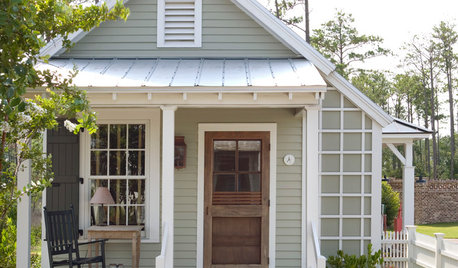

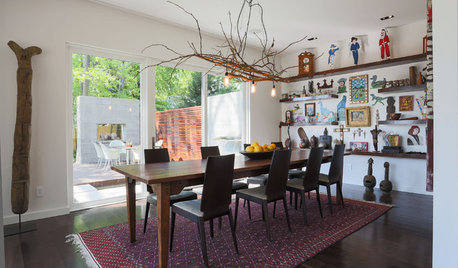
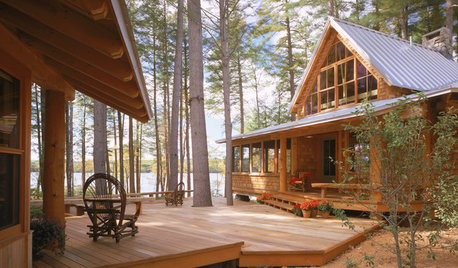


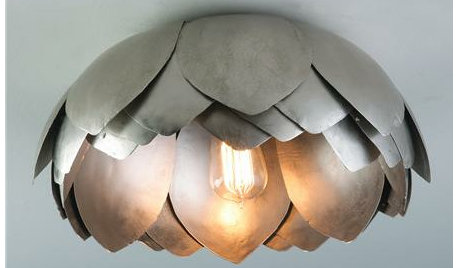
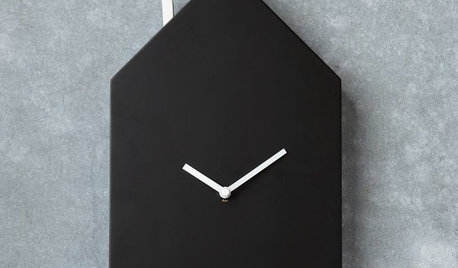
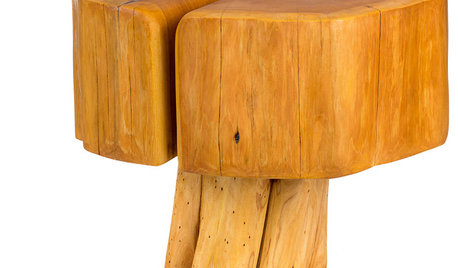







lysa39
carol23_gw
Related Professionals
Maple Valley Landscape Architects & Landscape Designers · Marina Landscape Architects & Landscape Designers · Americus Landscape Contractors · Berkley Landscape Contractors · Centereach Landscape Contractors · Fort Wayne Landscape Contractors · New Baltimore Landscape Contractors · Danbury Roofing & Gutters · San Jose Roofing & Gutters · Jefferson Hills Roofing & Gutters · Welby Decks, Patios & Outdoor Enclosures · Batavia Decks, Patios & Outdoor Enclosures · Glen Ellyn Decks, Patios & Outdoor Enclosures · Green Bay Decks, Patios & Outdoor Enclosures · Monroe Decks, Patios & Outdoor Enclosuresnel.nucifera
rhodes145
garden_love
barbe_wa
treasurificgal
jhgarden9
shanon_
bbrick2
itzybitzy_gw
zzackey
seedmoneyOriginal Author
browneyedsusan_gw
spacetogrow
tecnico
piyaz
Calyndra
Chemocurl zn5b/6a Indiana
roteruder
kevn357